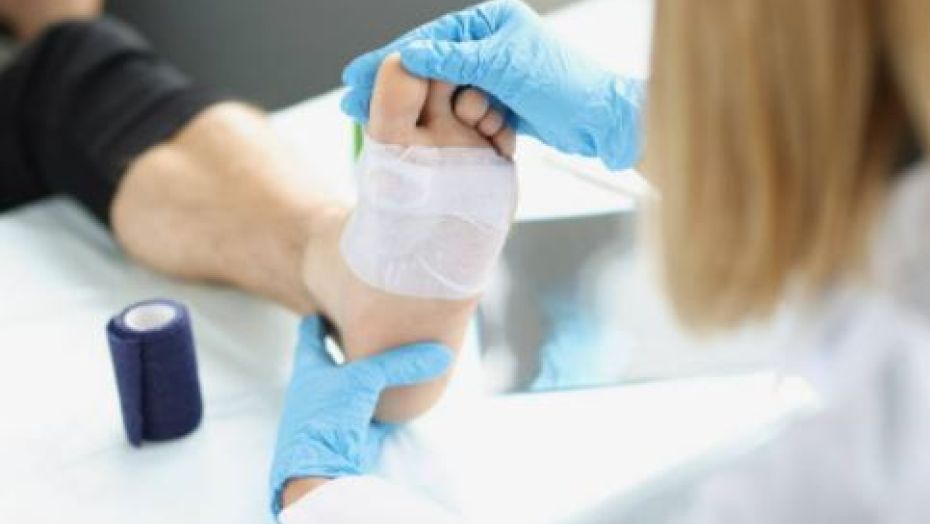
Staph Infections Can Be Dangerous: Here’s What to Know
A staph infection can be unpleasant and bothersome, and while most don’t pose serious complications, there are times a staph infection can be dangerous. But what exactly is staph and how do you get it?
What is staph?
Staphylococcus aureus (often referred to “staph”) is a germ commonly found on the skin, in the nose or in other areas of the body. Most of the time, staph does not cause an infection or symptoms, but if it gets into the blood, it can cause serious illness, sepsis (a life-threatening complication of an infection) or even death.
Staph infections are caused by different types of staph germs, including:
- Methicillin-resistant Staphylococcus aureus (MRSA)
- Methicillin-susceptible Staphylococcus aureus (MSSA)
- Vancomycin-intermediate Staphylococcus aureus (VISA)
- Vancomycin-resistant Staphylococcus aureus (VRSA)
What’s an MRSA infection?
Methicillin-resistant Staphylococcus aureus (MRSA) is especially noteworthy, as this type of staph infection is resistant to many antibiotics and most often causes skin lesions and infections. In some cases, it can cause pneumonia, sepsis and other serious health problems.
Anyone can get MRSA, but the risk increases with activities or places that involve crowds, skin-to-skin contact and shared equipment or supplies. Athletes, children in day cares and schools, and people who receive inpatient medical care, undergo surgery or have medical devices inserted in their body are at higher risk of MRSA infection.
According to the Centers for Disease Control, MRSA is usually spread by contact with infected people or things that are carrying the bacteria. This includes contact with a wound or by sharing personal items such as towels or razors.
Most MRSA infections appear as a bump, boil or an area that is red and swollen. Sometimes, these infections are described as looking like a spider bite. A fever may also be present. In many cases, it can be hard to tell if an infection is due to MRSA or another type of bacteria without lab tests.
How can I prevent an MRSA infection?
- Maintain good hygiene.
- Keep cuts, scrapes and wounds clean and covered until healed.
- Avoid sharing personal items.
- Seek care quickly if you think you might have an infection.
What’s an MSSA infection?
Methicillin-susceptible Staphylococcus aureus (MSSA) only differs from MRSA in its degree of antibiotic resistance.
Having MSSA on your skin doesn't usually cause any symptoms, nor does it make you ill. However, if MSSA gets deeper into your skin through a cut or other wound, it can cause similar symptoms to MRSA such as redness, swelling, warmth, pain and pus. If not treated, it can cause more serious infections such as toxic shock syndrome.
How do you get MSSA?
The bacteria that cause MSSA infections live harmlessly on many people's skin. You can get MSSA on your skin by:
- Touching someone who has MSSA
- Sharing things like towels, sheets and clothes with someone who has MRSA on their skin
- Touching surfaces or objects that have MRSA on them
There are things you can do to reduce your chances of getting an infection or spreading the bacteria to others. The CDC recommends washing your hands with soap and water regularly, keeping your skin clean, and keeping cuts clean and covered. As with MRSA, you are urged not to share towels, washcloths, bed linens, toothbrushes or razors.
What are VISA and VRSA infections?
Vancomycin-intermediate Staphylococcus aureus (VISA) and vancomycin-resistant Staphylococcus aureus (VRSA) are very similar and typically affect people who are hospitalized or have underlying health conditions (such as diabetes and kidney disease), tubes going into their bodies (such as catheters) or previous MRSA infections.
VISA and VRSA are antibiotic-resistant staph bacteria. As with all staph bacteria, spreading occurs among people who have close contact with infected patients in a healthcare facility or contaminated material such as bandages.
If you have had close contact with an infected person, the CDC says you should keep your hands clean by washing them thoroughly with soap and water and avoid contact with other people’s wounds or materials contaminated from wounds. If you go to a healthcare facility to visit a friend or family member who is infected with VISA or VRSA, you are urged to wear gloves and a mask.
What’s cellulitis?
Cellulitis is a type of staph infection that affects the deeper layers of the skin and is more common and more severe in people with weak immune systems. People who have diabetes or weakened immunity are particularly prone to developing cellulitis.
In most cases, the bacteria get into the body through openings in the skin, like an injury or surgical wound. In general, people cannot catch cellulitis from someone else.
Cellulitis can appear as a red, swollen and painful area of skin that is warm and tender to the touch. The skin may look pitted, like the peel of an orange, or blisters may appear. Some people may also develop fever and chills. Cellulitis can appear anywhere on the body, but it is most common on the feet and legs.
How are staph infections treated?
Treatment depends on the type of staph infection. Some require intravenous (IV) medications, while others may need to be drained of any pus or buildup surrounding the infection. Antibiotics can be used, but research has shown a gradual change in how well these antibiotics work. You and your doctor can determine which course of action is best for you.
Staph infections can be serious, so it’s important to be aware of your symptoms and seek appropriate care quickly, especially if your infection is accompanied by a fever.
To make an appointment with Dr. Farah Munir, click here.



